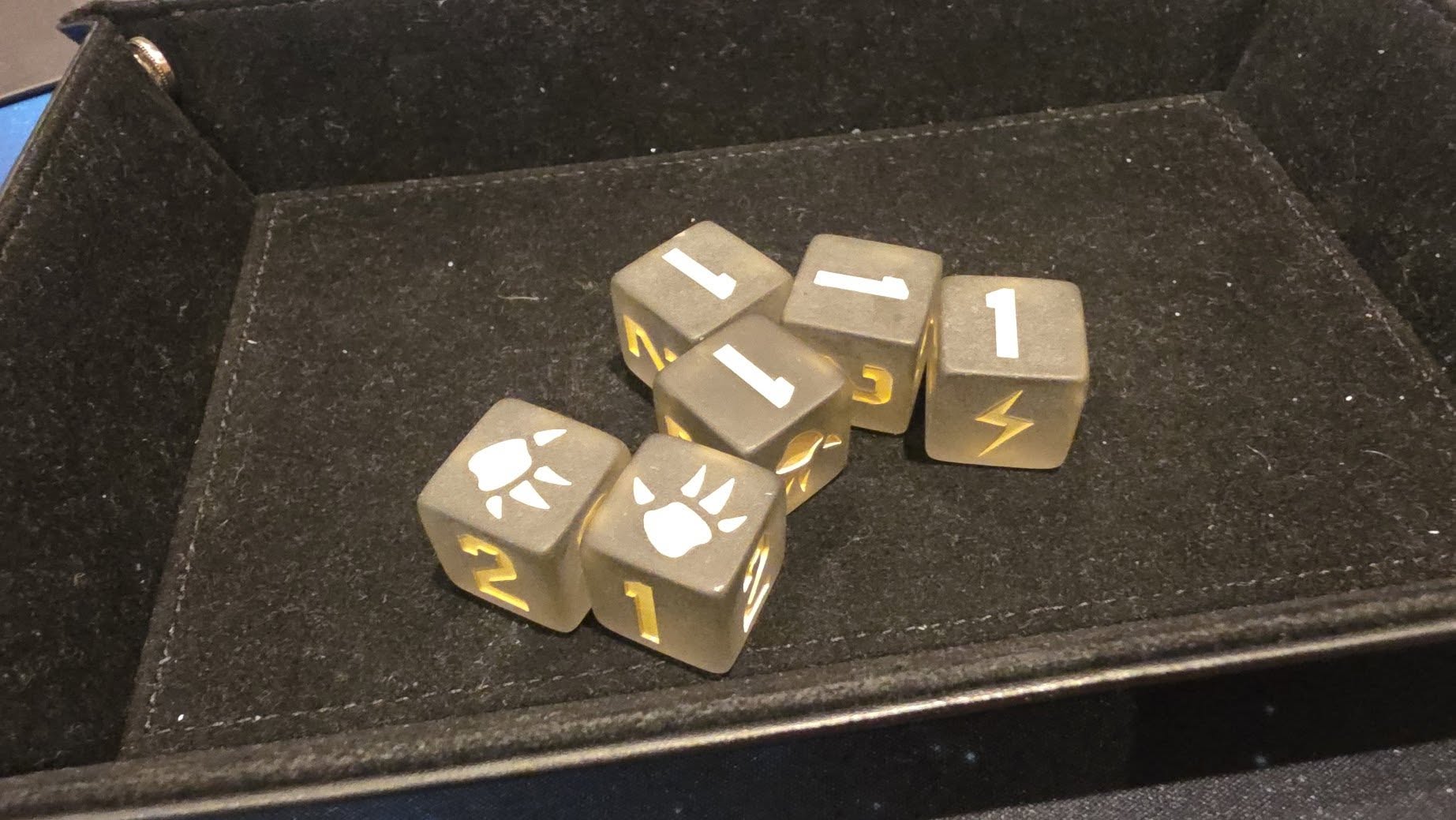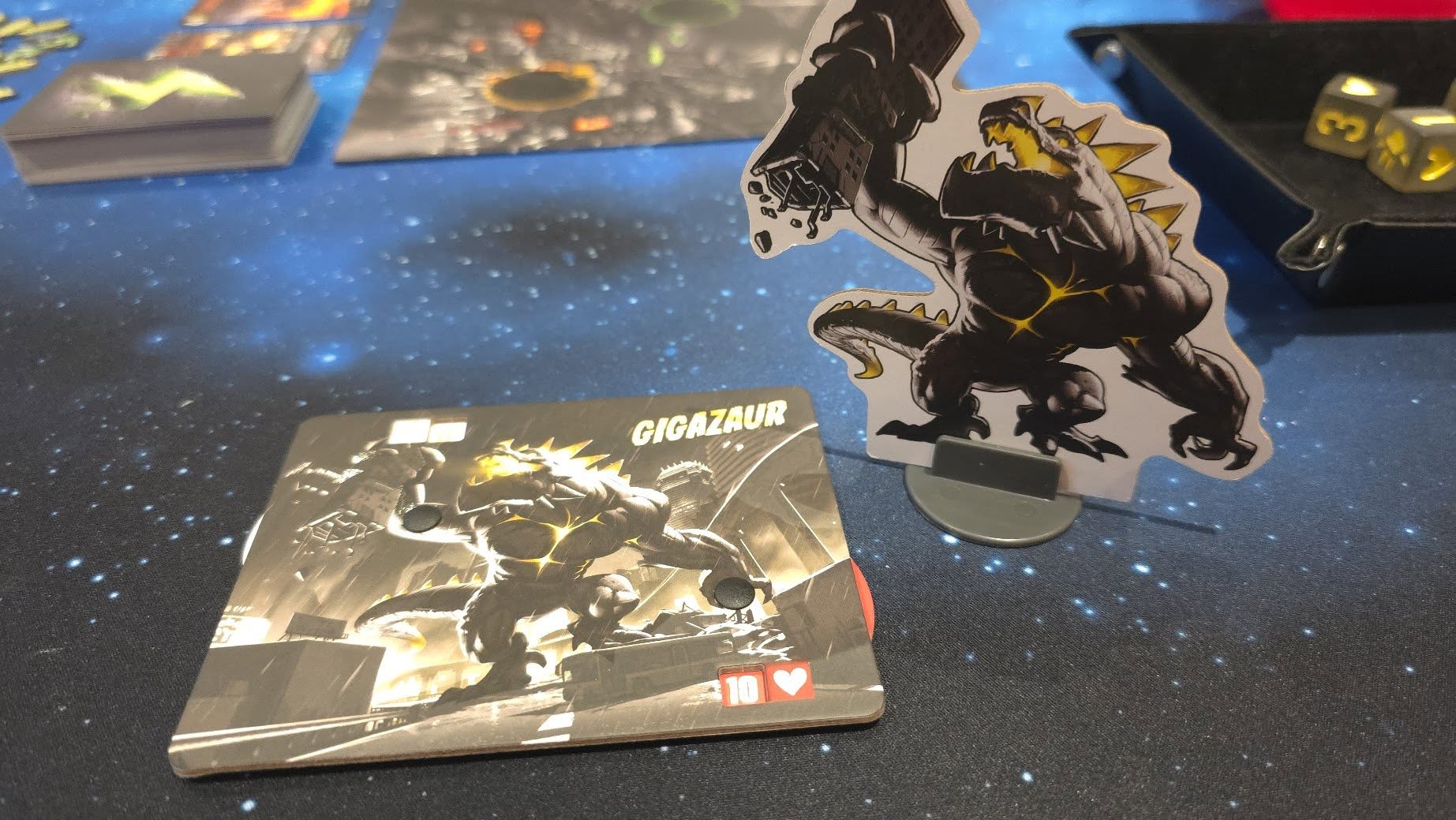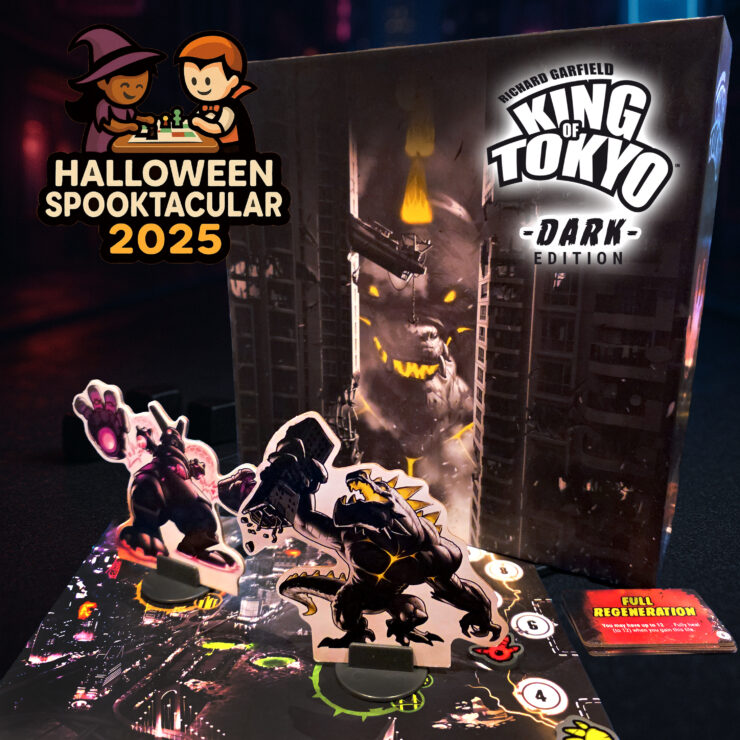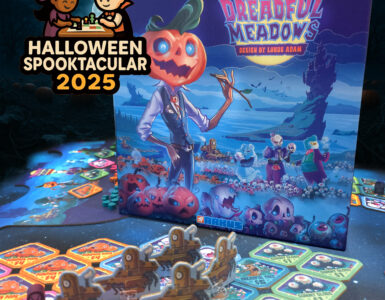My whirlwind relationship with King of Tokyo has been one that has been well documented over the years on Little Board Gamers. King of Tokyo was actually one of the first games that I reviewed way back in 2021, and it was also one of the first games that I really played with my kids when we started having regular board game sessions together. For some reason, it never quite clicked, and I ended up selling all of my King of Tokyo stuff, and that was that.
hard-to-find
Fast forward a few years and, having played King of Tokyo: Origins and King of Tokyo: Duel (you can find both reviews by searching the Facebook group or visiting the website), I have done a complete 180 on the game. Now, King of Tokyo feels like a really accessible action game to play with the kids.

The version that I originally bought was actually King of Tokyo: Dark Edition, and when I sold it, I was a little bit sad because this version is quite hard to get, but its artwork is extremely appealing. Fast forward to this year’s UK Games Expo, where I actually managed to get a copy of King of Tokyo: Dark Edition back from group member Cath Short for a very reasonable price.
King of Tokyo is essentially a Yahtzee-style game where you play as kaiju trying to become the ruler of Tokyo and defeat all the other monsters. On your turn, you roll dice that allow you to attack opponents, gain energy to buy special powers, regain health, or collect sets of numbers to earn victory points.

You gain more victory points at the start of your turn by being the monster in Tokyo. The downside is that while you’re in Tokyo, you’re vulnerable to attacks from everyone outside it. At the end of each player’s turn, if you’re in Tokyo, you can choose whether to yield Tokyo and retreat, forcing the player who attacked you to take your place, sometimes with devastating consequences.
Being in Tokyo involves a massive risk-reward balance. On your turn, all your attacks target everyone outside Tokyo, but you cannot heal while you’re in the city. So, you must carefully manage when to stay in Tokyo and when to leave.
As well as Tokyo City, there is also Tokyo Bay, which is used if you play with a larger player count. This gives multiple monsters somewhere to go and helps take a little pressure off trying to stay in Tokyo for your turn. You can also spend your energy on extra powers, which allow you to do things like change dice rolls, make additional attacks, or gain victory points in other ways.

King of Tokyo: Dark Edition does, however, come with one extra mechanic not found in the regular base version, and that is the Wickedness Track. As you roll triple ones or triple twos, you can advance your Wickedness marker up from 0 to 10. Along the way, you unlock extra powers that are extremely useful. This mechanic proved so popular that you can now buy the Wickedness expansion separately for the regular King of Tokyo, and I’d highly recommend it as it adds a lot to the game.
The thing that appeals most about the Dark Edition, however, is the stunning artwork. While the bright, cartoonish visuals of the regular version will be preferred by many, I personally, as do my kids, prefer the gritty, almost cyberpunk style of the Dark Edition. The box art is fantastic, and it looks great both on the shelf and on the table.
Now, King of Tokyo: Dark Edition has become something of a collector’s piece. It was released as a limited edition and has long since gone out of print, which means finding a copy can be tricky. Prices on the secondary market often sit around the £80–£100 mark, though occasionally you’ll find a more reasonable deal if you are patient. For collectors, it’s a must-have version, but for casual players, the standard edition or one of the newer versions will give you the same fun gameplay without the hefty price tag.
Over the years, King of Tokyo has seen a number of editions and variations:
- King of Tokyo (2011) – The original version designed by Richard Garfield, featuring colourful cartoon monsters and fast, chaotic gameplay.
- King of Tokyo (Second Edition, 2016) – A visual refresh with updated art and streamlined components, now the most common version in shops.
- King of Tokyo: Dark Edition (2020) – A limited, collector’s version with darker artwork and the Wickedness Track mechanic.
- King of Tokyo: Origins (2023) – A simplified, family-friendly entry version with more accessible rules and a softer art style.
- King of Tokyo: Duel (2024) – A two-player-only head-to-head version that reimagines the core gameplay for duelling monsters.
- King of Tokyo: Monster Box (2021) – A large box edition that includes the base game, several expansions, and exclusive content.
As I said at the end of my King of Tokyo: Origins review, I can’t really explain my previous lukewarm feelings about the original, and I’m fairly confident we made some mistakes with the rules back then, which meant it didn’t impress me quite as much as it does now.
I really like King of Tokyo, and I would 100% recommend getting a copy. Would I recommend you go and pay through the nose, probably upwards of £100 on eBay, to get a Dark Edition? Probably not. If you really love the aesthetic and you’re a collector like me, then maybe, but for most people, the regular edition is a great choice. If you want the full experience, I’d recommend the King of Tokyo: Monster Box, which I’ll try to review soon. Alternatively, King of Tokyo: Origins is cheap, easy to find, and provides much the same experience with some of the complexity removed, which might make it even better for younger children.

*Definitely worth getting but prob best go for the cheaper normal edition unless you are a real collector.













